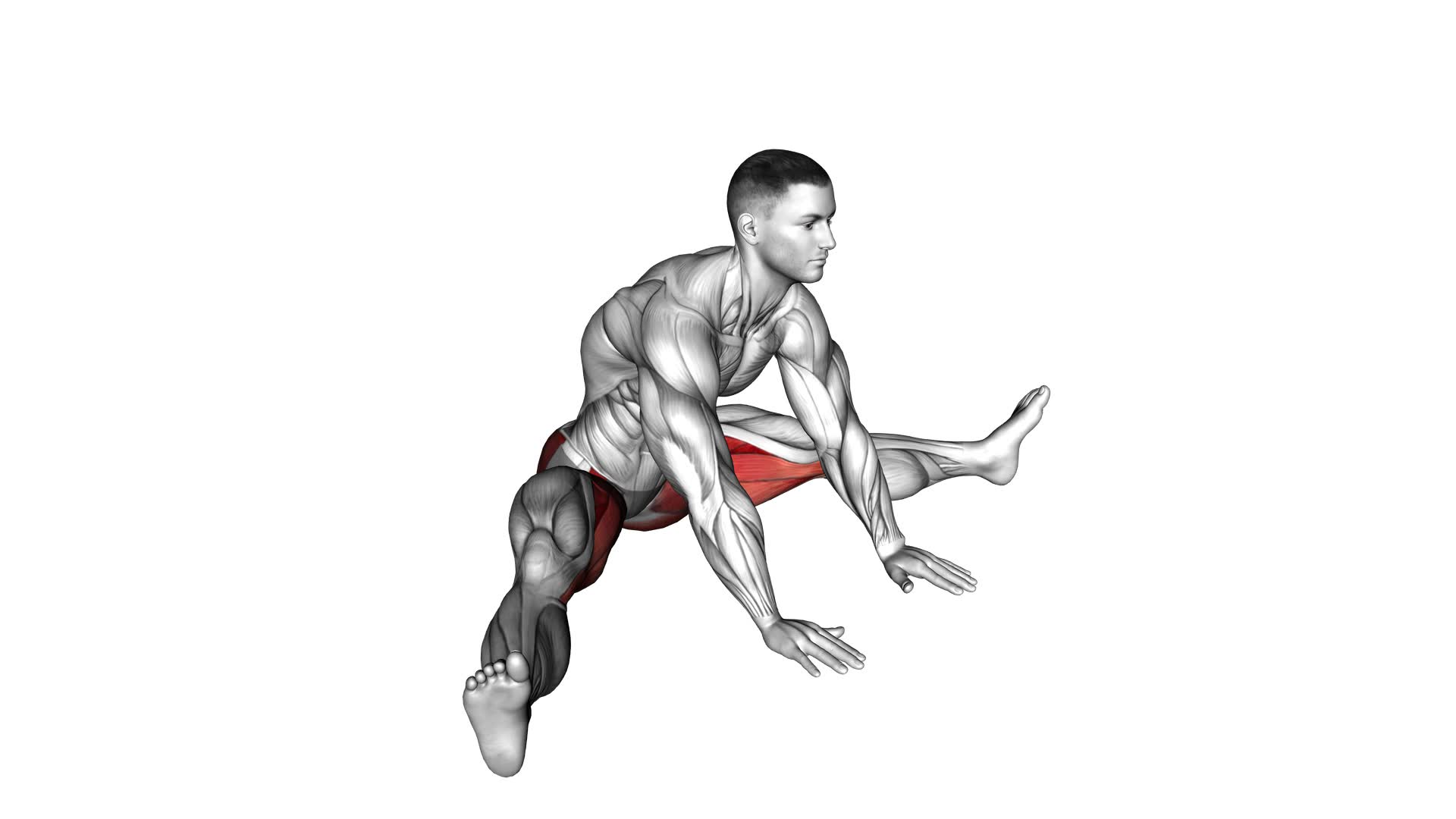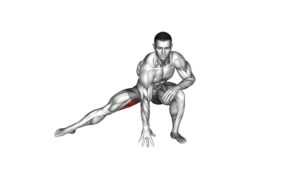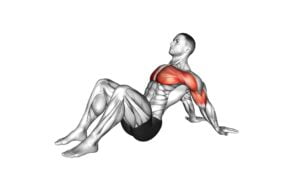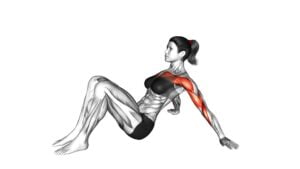Seated Knee Flexor And Hip Adductor Stretch – Video Exercise Guide & Tips

Are you looking for an effective stretch to target your knee flexors and hip adductors? Look no further!
Watch This Exercise Video
In this video exercise guide, we'll show you the seated knee flexor and hip adductor stretch. By incorporating this stretch into your routine, you can improve flexibility, reduce muscle tightness, and enhance your overall mobility.
Whether you're a beginner or an advanced fitness enthusiast, we've got modifications and variations to suit your level.
Get ready to stretch and feel the benefits!
Key Takeaways
- Increased flexibility in knee flexors and hip adductors
- Improved range of motion in hips and knees
- Enhanced hip flexibility and muscle recovery
- Reduction of muscle tightness and soreness
Benefits of the Seated Knee Flexor and Hip Adductor Stretch
You will experience increased flexibility and improved range of motion in your knee flexors and hip adductors by regularly performing the seated stretch. This stretch specifically targets the muscles in your hips and knees, helping to improve hip flexibility and promote muscle recovery.
By stretching your knee flexors, which include the muscles in the back of your thigh (hamstrings) and calves, you can increase their flexibility and reduce tightness. This is beneficial for athletes and individuals who engage in activities that require a lot of running, jumping, or kicking. The seated stretch also targets the hip adductors, which are the muscles on the inside of your thighs. These muscles are responsible for bringing your legs together and are commonly used in activities like dancing or playing sports that involve lateral movements.
Improving hip flexibility through the seated stretch can have a positive impact on your overall mobility and performance. It can help alleviate any tightness or discomfort in the hips and increase your range of motion. Additionally, regularly stretching these muscles can aid in muscle recovery by reducing soreness and promoting blood flow to the area.
Make sure to perform the seated stretch correctly and consistently to reap the full benefits. Remember to warm up before stretching and hold each stretch for 20-30 seconds, repeating 2-3 times on each side. Incorporating this stretch into your regular routine will help improve your hip flexibility and aid in muscle recovery.
Proper Form and Technique for the Stretch
To perform the seated knee flexor and hip adductor stretch with proper form and technique, maintain a straight back and engage your core muscles throughout the exercise. This will help you achieve maximum benefit from the stretch and prevent injury.
One common misconception is that you need to round your back during this stretch. However, rounding your back can actually reduce the effectiveness of the stretch and put unnecessary strain on your spine. Instead, focus on keeping your back straight and lengthening your spine.
Another important aspect of proper form is to breathe deeply and consistently throughout the stretch. This will oxygenate your muscles and help them relax, allowing for a deeper stretch. Inhale deeply through your nose and exhale slowly through your mouth as you hold the stretch.
Transitioning into the subsequent section about common mistakes to avoid during the stretch, it's important to be aware of these errors to ensure you're performing the exercise correctly and safely. By maintaining a straight back and engaging your core, as well as incorporating proper breathing techniques, you're setting yourself up for a successful and effective seated knee flexor and hip adductor stretch.
Common Mistakes to Avoid During the Stretch
To avoid common mistakes during the seated knee flexor and hip adductor stretch, it's crucial to maintain proper alignment and avoid rounding your back. One common mistake is failing to engage the core muscles. When the core isn't activated, it can lead to excessive arching of the lower back, which puts unnecessary strain on the spine. To prevent this, make sure to draw your belly button in towards your spine and maintain a neutral spine throughout the stretch.
Another mistake to avoid is using momentum to perform the stretch. This happens when individuals rush through the movement, relying on momentum rather than controlled muscle engagement. To get the most out of the stretch, it's essential to move slowly and deliberately, focusing on the targeted muscles and allowing them to lengthen gradually.
Furthermore, be cautious not to push yourself too hard or force the stretch beyond your comfort level. Stretching should never be painful; it should feel like a gentle pulling or slight discomfort. Pushing too hard can result in injury or strain, so listen to your body and respect its limits.
Lastly, remember to breathe deeply and relax into the stretch. Holding your breath or tensing up can hinder the effectiveness of the stretch and increase the risk of injury. By maintaining proper alignment, engaging the core, moving with control, and respecting your body's limits, you can avoid these common mistakes and maximize the benefits of the seated knee flexor and hip adductor stretch.
Modifications and Variations for Different Fitness Levels
As we transition into discussing modifications and variations for different fitness levels, it's important to consider how you can tailor the seated knee flexor and hip adductor stretch to your specific needs and abilities. By making adjustments to the stretch, you can ensure injury prevention and maximize muscle activation.
For individuals who are new to stretching or have limited flexibility, it's recommended to start with a modified version of the seated knee flexor and hip adductor stretch. Instead of extending your legs fully, you can begin by bending your knees slightly and gradually work towards straightening them over time. This modification allows for a gentler stretch and reduces the risk of straining the muscles.
On the other hand, if you're more experienced and have greater flexibility, you can increase the intensity of the stretch by extending your legs fully and leaning forward to deepen the stretch. This variation increases the range of motion and challenges the muscles to work harder.
Regardless of your fitness level, it's essential to listen to your body and not push yourself beyond your limits. Remember to always warm up before stretching and consult with a professional if you have any concerns or pre-existing conditions.
Tips for Incorporating the Stretch Into Your Exercise Routine
You can easily incorporate the seated knee flexor and hip adductor stretch into your exercise routine by following these helpful tips. Including this stretch in your regular stretching routine will help improve flexibility and prevent muscle imbalances.
Firstly, it's important to warm up your muscles before attempting any stretching exercises. You can do a light cardio workout or some dynamic stretching to prepare your body for the stretch. This will help increase blood flow and make the stretch more effective.
When performing the seated knee flexor and hip adductor stretch, make sure to maintain proper form. Sit on the floor with your legs extended in front of you. Bend one knee and place the sole of your foot against the inner thigh of the opposite leg. Gently lean forward from your hips, keeping your back straight. You should feel a stretch in the back of your extended leg and inner thigh of the bent leg.
Hold the stretch for 30 seconds to 1 minute, and repeat on the other side. It's important to listen to your body and never push yourself too far. If you feel any pain or discomfort, ease off the stretch.
Incorporating this stretch into your exercise routine a few times a week will help improve your flexibility and prevent muscle tightness. Remember to always warm up before stretching and listen to your body's limits.
Happy stretching!
Frequently Asked Questions
Can the Seated Knee Flexor and Hip Adductor Stretch Help With Lower Back Pain?
Stretching is a great way to alleviate lower back pain and promote overall flexibility.
The seated knee flexor and hip adductor stretch can specifically target these areas, providing relief and improving your range of motion.
By incorporating this stretch into your daily routine, you can strengthen and lengthen the muscles in your lower back, reducing discomfort and preventing future pain.
To perform this stretch properly, sit down with your legs extended, gently reach forward, and feel the stretch in your hamstrings and inner thighs.
Is It Safe to Perform the Stretch if I Have a Knee Injury?
When dealing with a knee injury, it's important to take precautions when performing the seated knee flexor and hip adductor stretch. Be sure to listen to your body and stop if you feel any pain or discomfort.
It may be necessary to modify the stretch to accommodate your injury, such as using a towel or cushion for support. Beginners should start with a lighter intensity and gradually increase as they become more comfortable.
How Long Should I Hold the Stretch for Maximum Benefits?
For maximum benefits, it's recommended to hold the seated knee flexor and hip adductor stretch for about 30 to 60 seconds. This allows enough time for your muscles to relax and lengthen.
When performing the stretch, make sure to maintain proper form and technique. Sit tall with your back straight, and gently lean forward from your hips.
Avoid bouncing or jerking movements, and listen to your body's limits to prevent injury.
Can I Perform the Stretch Without Any Equipment?
Yes, you can perform the stretch without any equipment. There are alternative stretches that you can do to target the knee flexors and hip adductors.
For beginners, modifications can be made to make the stretch more accessible. It's important to listen to your body and not push yourself too hard.
Remember to warm up before stretching and hold each stretch for around 30 seconds to a minute for maximum benefits.
Are There Any Specific Warm-Up Exercises Recommended Before Attempting the Seated Knee Flexor and Hip Adductor Stretch?
Before attempting the seated knee flexor and hip adductor stretch, it's important to warm up your muscles to prevent injuries.
Some recommended warm-up exercises include light cardio activities like jogging or cycling, as well as dynamic stretches that target the lower body. These warm-up exercises help increase blood flow and flexibility in the muscles, preparing them for the seated knee flexor and hip adductor stretch.
If you're looking for alternative stretches, consider exercises like the standing hamstring stretch or the butterfly stretch.
Conclusion
Incorporating the seated knee flexor and hip adductor stretch into your exercise routine can provide numerous benefits, including improved flexibility and reduced muscle tightness.
By ensuring proper form and avoiding common mistakes, you can maximize the effectiveness of this stretch.
Additionally, modifications and variations make it suitable for individuals at different fitness levels.
Remember to consult with a professional trainer or healthcare provider before starting any new exercise routine.
Start incorporating this stretch today for a stronger and more flexible lower body.

Author
Years ago, the spark of my life’s passion ignited in my mind the moment I stepped into the local gym for the first time. The inaugural bead of perspiration, the initial endeavor, the very first surge of endorphins, and a sense of pride that washed over me post-workout marked the beginning of my deep-seated interest in strength sports, fitness, and sports nutrition. This very curiosity blossomed rapidly into a profound fascination, propelling me to earn a Master’s degree in Physical Education from the Academy of Physical Education in Krakow, followed by a Sports Manager diploma from the Jagiellonian University. My journey of growth led me to gain more specialized qualifications, such as being a certified personal trainer with a focus on sports dietetics, a lifeguard, and an instructor for wellness and corrective gymnastics. Theoretical knowledge paired seamlessly with practical experience, reinforcing my belief that the transformation of individuals under my guidance was also a reflection of my personal growth. This belief holds true even today. Each day, I strive to push the boundaries and explore new realms. These realms gently elevate me to greater heights. The unique combination of passion for my field and the continuous quest for growth fuels my drive to break new ground.



